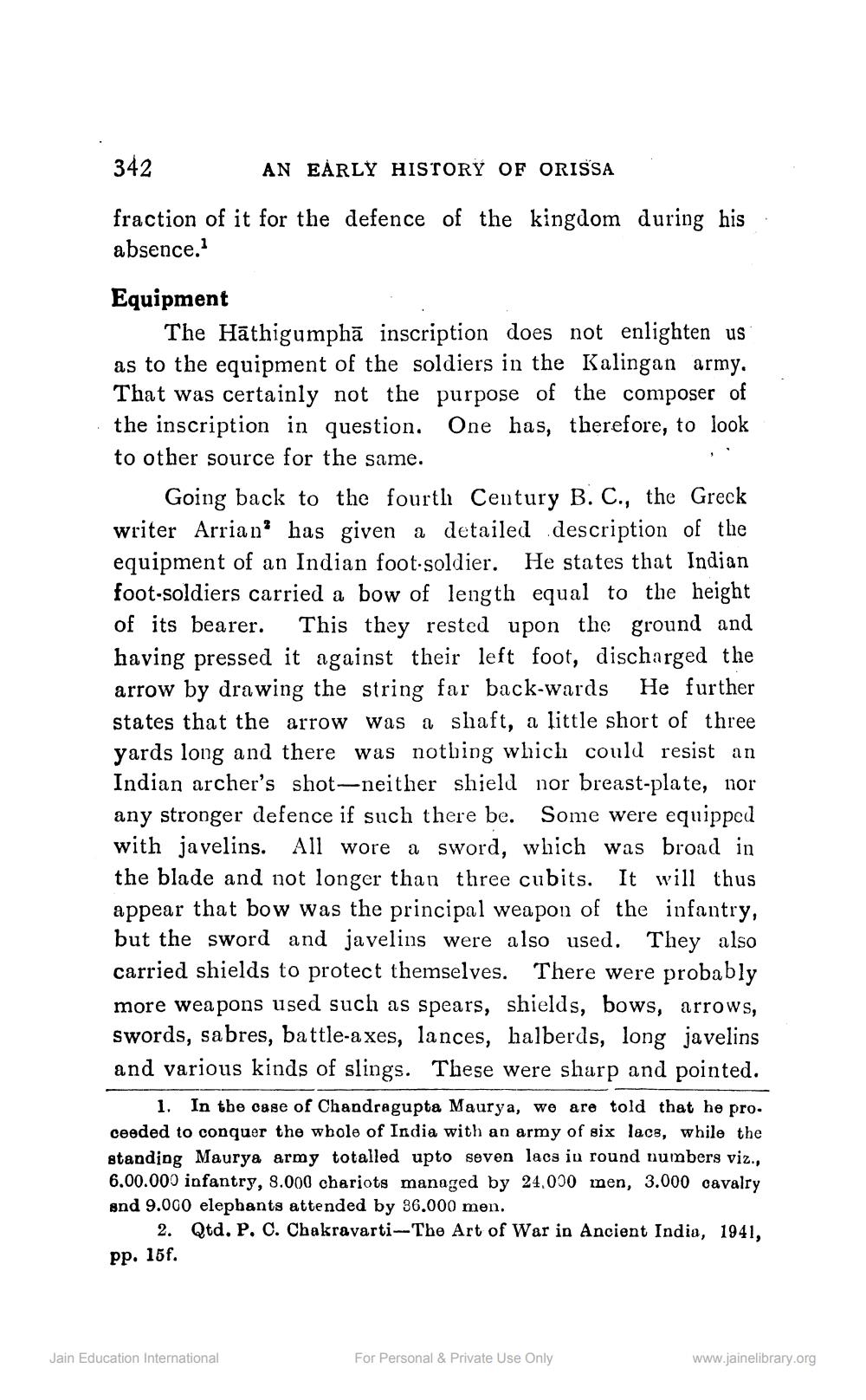________________
342 AN EARLY HISTORY OF ORISSA fraction of it for the defence of the kingdom during his absence.
Equipment
The Hāthigumphā inscription does not enlighten us as to the equipment of the soldiers in the Kalingan army. That was certainly not the purpose of the composer of the inscription in question. One has, therefore, to look to other source for the same.
Going back to the fourth Century B. C., the Greck writer Arriano has given a detailed description of the equipment of an Indian foot-soldier. He states that Indian foot-soldiers carried a bow of length equal to the height of its bearer. This they rested upon the ground and having pressed it against their left foot, discharged the arrow by drawing the string far back-wards He further states that the arrow was a shaft, a little short of three yards long and there was nothing which could resist an Indian archer's shot-neither shield nor breast-plate, nor any stronger defence if such there be. Some were equipped with javelins. All wore a sword, which was broad in the blade and not longer than three cubits. It will thus appear that bow was the principal weapon of the infantry, but the sword and javelins were also used. They also carried shields to protect themselves. There were probably more weapons used such as spears, shields, bows, arrows, swords, sabres, battle-axes, lances, halberds, long javelins and various kinds of slings. These were sharp and pointed.
1. In the case of Chandragupta Maurya, we are told that he pro. ceeded to conquer the wbole of India with an army of six lacs, while the standing Maurya army totalled upto seven lacs in round numbers viz., 6.00.000 infantry, 3.000 chariots managed by 24,000 inen, 3.000 cavalry end 9.000 elephants attended by 36.000 men.
2. Qtd. P. C. Chakravarti --The Art of War in Ancient India, 1941, pp. 15f.
Jain Education International
For Personal & Private Use Only
www.jainelibrary.org




